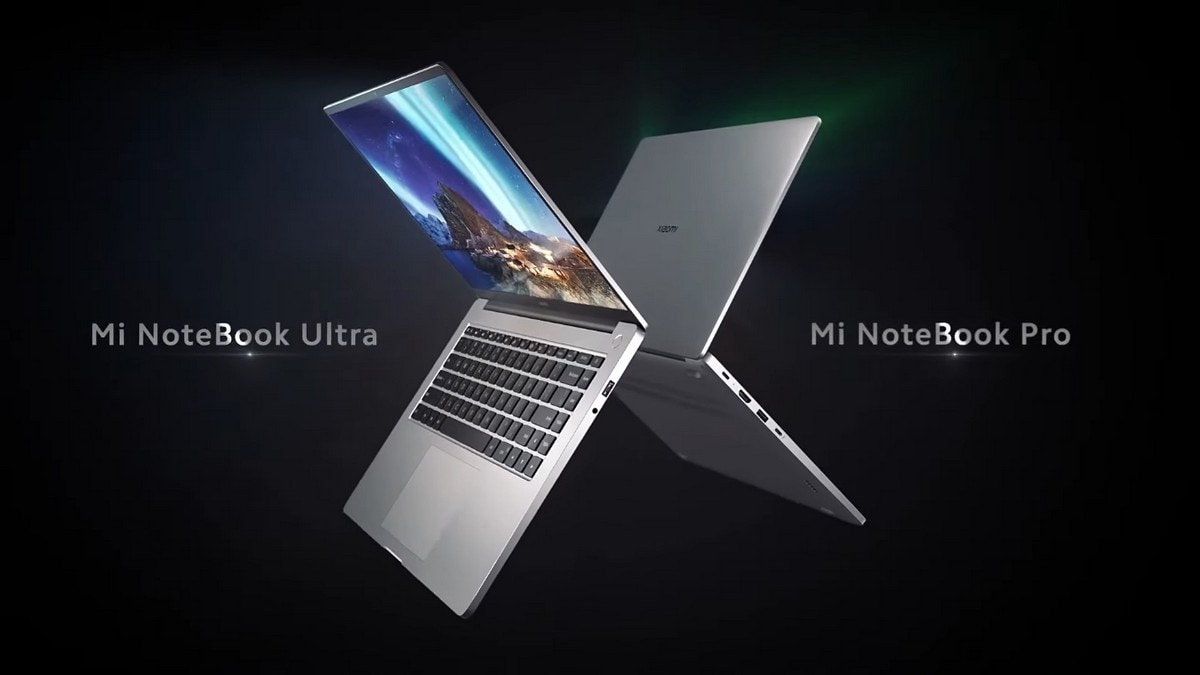
Mi NoteBook Ultra and Mi Notebook Pro were launched in India on Thursday as part of Xiaomi’s Smarter Living 2022 event. The new laptops will join the Mi Notebook 14 Horizon Edition under Xiaomi’s Mi brand. They are powered by 11th Gen Intel Core processors with Intel Iris Xe graphics and come in multiple configurations. The 15.6-inch Mi NoteBook Ultra and 14-inch Mi NoteBook Pro are offered in single colour options and have a slim and light form factor. The laptops also offer a backlit keyboard and a taller 16:10 aspect ratio display.
Mi NoteBook Ultra, Mi NoteBook Pro: Price in India, availability
Both laptops have two 11th Gen Intel Core processors on offer – Core i5-11300H clocked at 4.4GHz (Turbo Boost up to 5GHz) and Core i7-11370H clocked at 4.8GHz (Turbo Boost up to 5GHz). The Mi NoteBook Ultra starts at Rs. 59,999 and this configuration includes the Core i5 processor and 8GB of RAM. For Rs. 63,999, you get the Core i5 processor and 16GB of RAM. Lastly, the Intel Core i7 processor with 16GB of RAM model costs Rs. 76,999.
Mi NoteBook Pro starts at Rs. 56,999 and this configuration includes an Intel Core i5 processor with 8GB of RAM. There is a Core i5 + 16GB RAM model as well that costs Rs. 59,999. The top-of-the-line Core i7 + 16GB RAM model costs Rs. 72,999.
Both the Mi NoteBook Ultra and Mi NoteBook Pro will go on sale in India in Lustrous Grey colour starting August 31 via Mi.com, Amazon, and Mi Home stores, with retail outlets following soon. There will also be a cashback offer with HDFC Bank credit card and EMI transaction worth up to Rs. 4,500 off on Core i7 models and up to Rs. 3,500 off on Core i5 variants.
Mi NoteBook Ultra specifications, features
Mi NoteBook Ultra is constructed out of Series 6 Aluminium. It runs Windows 10 Home and features a 15.6-inch 3,200×2,000 pixels Mi-Truelife+ display with 16:10 aspect ratio, 90Hz refresh rate, 300 nits peak brightness, 100 percent sRGB coverage, TUV Rheinland low blue light certification, and DC dimming. The laptop comes with 89 percent screen to body ratio and there is an HD webcam at the top as well. Under the hood, it carries up to an Intel Core i7-11370H CPU paired with Intel Iris Xe graphics. It comes with up to 16GB of DDR4 RAM clocked at 3,200MHz and 512GB of NVMe SSD storage.
Connectivity options on the Mi NoteBook Ultra include Wi-Fi 6, Bluetooth v5.1, a Thunderbolt 4 port, HDMI port, USB Type-C port, two USB Type-A ports, and a 3.5mm headphone jack. Audio is handled by two 2W speakers with DTS Audio processing. The power button doubles as a fingerprint scanner and the backlit scissor keyboard has three levels of brightness, along with 1.5mm of travel. Xiaomi says the trackpad is 62 percent larger compared to the previous Mi Notebook model and supports Windows gestures. In terms of battery, the Mi NoteBook Ultra has a claimed 12-hour battery life thanks to its 70Whr battery. It also supports USB Type-C charging with a 65W charger. The laptop is 17.9mm thick and weighs 1.7kg.
Mi NoteBook Pro specifications, features
Mi NoteBook Pro features a 14-inch 2.5K (2,560×1,600 pixels) display with 16:10 aspect ratio, 300 nits peak brightness, 100 percent sRGB coverage, TUV Rheinland low blue light certification, and DC dimming. It is powered by up to an 11th generation Intel Core i7 processor with Iris Xe graphics. It comes with up to 16GB of RAM and 512GB of SSD storage. The Mi NoteBook Pro also features the same connectivity options and audio capabilities as the Mi NoteBook Ultra. It has a claimed 11-hour battery life thanks to its 56Whr battery. The laptop weighs just 1.4kg and is 17.3mm thick.
Both the Mi NoteBook models come with Window 10 and will be upgradable to Windows 11. They also come with Microsoft Office Home 2019 pre-installed.




















